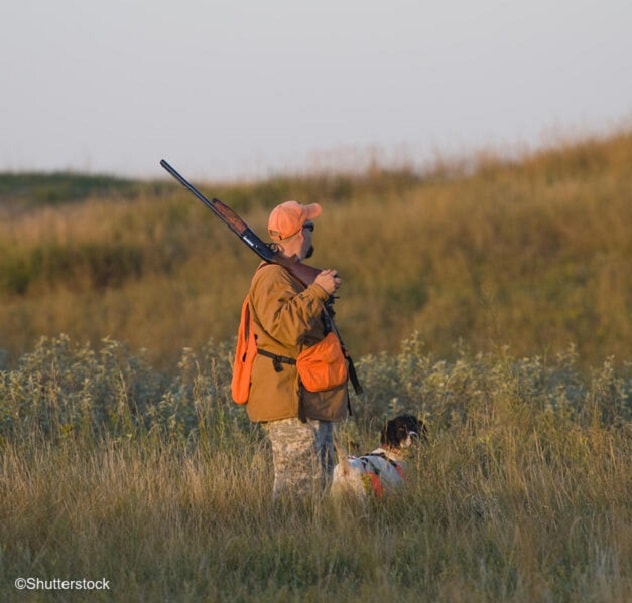Oct. 01, 2024
 Cazador con pistola y perro
Cazador con pistola y perro
Un cazador vestido de marrón y camuflaje, con un chaleco y gorra color naranja de pie con una pistola al hombro junto a un perro en un campo verde.
Deer, feral animal, predator and wildfowl hunts may involve firearms, presenting a degree of risk to the hunter. In this Q&A, Daniel Stephens, M.D., trauma surgeon and adult medical director of Mayo Clinic Trauma Center, discusses his experiences with hunting-related gun injuries.
Where have you encountered gunshot injuries from hunting?
I've gone hunting with firearms occasionally, but I've never had a gunshot injury. I've seen hunting-related gunshot injuries in the hospital, as they're common.
What types of injuries have you seen?
Firearms injuries while hunting vary. Many happen inadvertently and nonfatally. For example, hunters shoot themselves in the foot, leg or buttocks by accidental discharge while holstering their guns, or another hunter mistakes them for wildlife and shoots them.
If a hunter is injured by a gunshot, how can others help at the scene?
I'd suggest:
- Get help. Contact emergency services immediately to provide treatment and transport the person to a hospital.
- Remain calm and use common sense. It's important to be levelheaded so you can act wisely to help the injured hunter.
- Go through the trauma ABCs. As the Advanced Trauma Life Support course teaches, check the injured person's airway, breathing and circulation.
- Stop bleeding. Arresting bleeding is crucial to saving the injured hunter's life. Learn the procedures in the Stop the Bleed course or Red Cross first-aid and CPR classes, such as applying direct pressure, packing the wound and applying a tourniquet.
What steps would you recommend if someone with a hunting-related gunshot wound presents at a trauma center?
I'd recommend:
- Assess the patient's ABCs. Apply a tourniquet to control the hemorrhage, then confirm the patient is breathing and the airway is protected.
- Initiate a telemedicine videoconference. If you have questions about best practices for a gunshot injury, contact the Mayo Clinic Emergency Department so a specialist on call can discuss or guide you through appropriate steps and transfer decisions.
- Conduct imaging. Imaging can rule out deeper penetration or organ damage. CT scans can help if there's a low-velocity gunshot wound to the back or abdomen. X-rays, such as anterior-to-posterior or lateral films, can identify a foreign object's trajectory and locality. Don't delay transport for imaging but use any transport lag for this purpose.
- Consider a tetanus shot and antibiotics. These are often indicated for gunshot wounds.
- Determine if the patient requires transfer. This need varies by the gunshot wound, such as by a long gun or handgun. Instability or truncal or proximal injuries require transfer.
Do you recommend any precautions for the transfer of patients with a gunshot wound?
I recommend erring on the side of caution. However, spinal injuries are rare. Unless the trajectory or another factor indicates this injury, full spinal precautions are unnecessary.
Also, remember a patient's stability can go downward rapidly.
What ideas do you have for informing people about gun safety and hunting?
To help community members prevent and prepare for gun-related hunting injuries, use the safety tips on the Minnesota Department of Natural Resources hunter and firearms safety webpage. I'd also recommend you partner with:
- Local hunting groups, gun clubs, shooting ranges and sportsmen's clubs.
- Associations or clubs affiliated with the National Rifle Association.
- A Bureau of Alcohol, Tobacco, Firearms and Explosives field division.
- Your state's department of natural resources.
Also, post on social media and suggest a story about gun safety while hunting to local broadcast and print media.
For more information
Advanced Trauma Life Support. American College of Surgeons Trauma Education.
Get trained. Stop the Bleed.
Get trained: Act with Confidence. American Red Cross Training Services.
Basic rules of hunter and firearms safety. Minnesota Department of Natural Resources.
Refer a patient to Mayo Clinic.